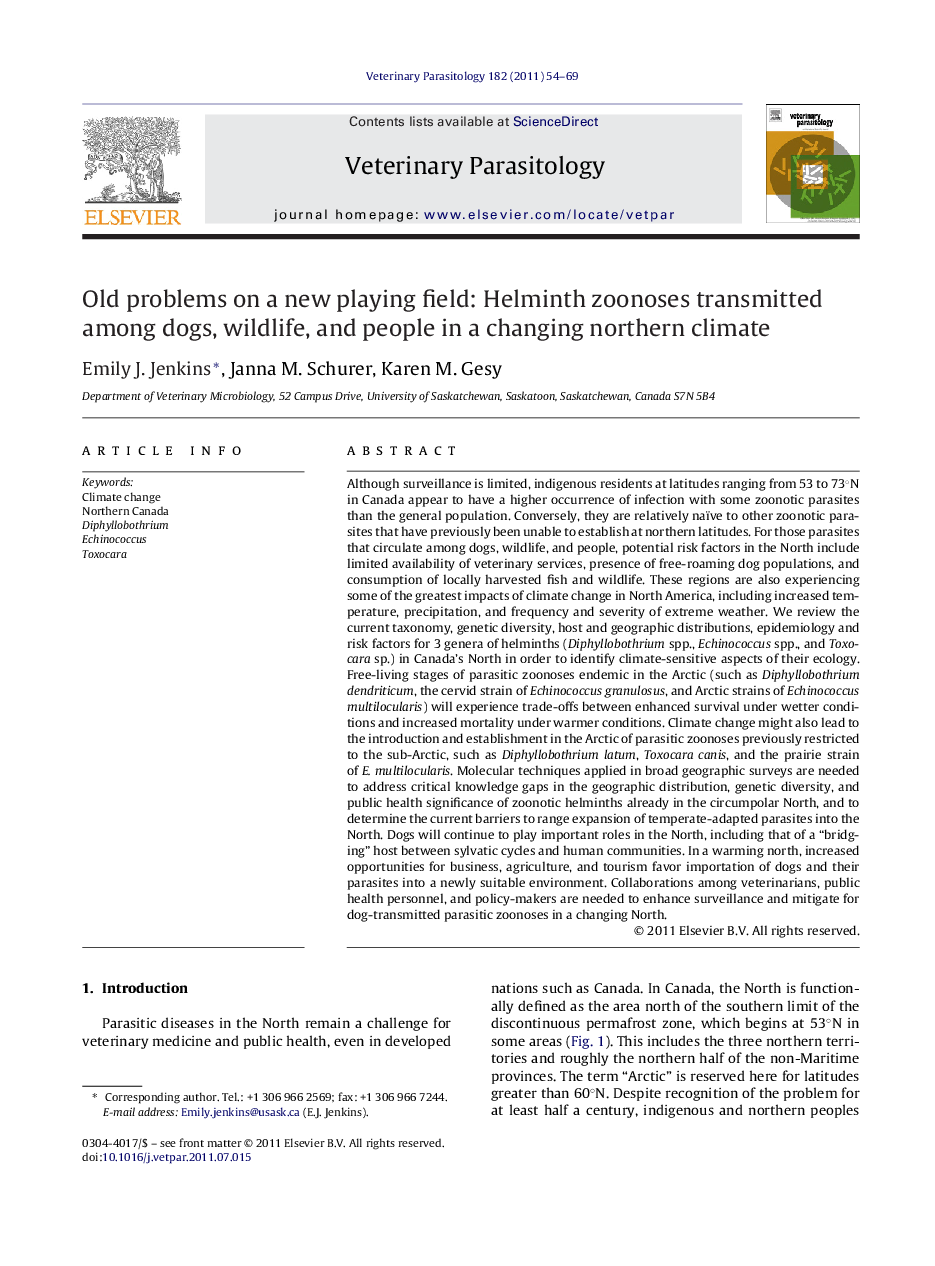| کد مقاله | کد نشریه | سال انتشار | مقاله انگلیسی | نسخه تمام متن |
|---|---|---|---|---|
| 5805689 | 1112483 | 2011 | 16 صفحه PDF | دانلود رایگان |

Although surveillance is limited, indigenous residents at latitudes ranging from 53 to 73°N in Canada appear to have a higher occurrence of infection with some zoonotic parasites than the general population. Conversely, they are relatively naïve to other zoonotic parasites that have previously been unable to establish at northern latitudes. For those parasites that circulate among dogs, wildlife, and people, potential risk factors in the North include limited availability of veterinary services, presence of free-roaming dog populations, and consumption of locally harvested fish and wildlife. These regions are also experiencing some of the greatest impacts of climate change in North America, including increased temperature, precipitation, and frequency and severity of extreme weather. We review the current taxonomy, genetic diversity, host and geographic distributions, epidemiology and risk factors for 3 genera of helminths (Diphyllobothrium spp., Echinococcus spp., and Toxocara sp.) in Canada's North in order to identify climate-sensitive aspects of their ecology. Free-living stages of parasitic zoonoses endemic in the Arctic (such as Diphyllobothrium dendriticum, the cervid strain of Echinococcus granulosus, and Arctic strains of Echinococcus multilocularis) will experience trade-offs between enhanced survival under wetter conditions and increased mortality under warmer conditions. Climate change might also lead to the introduction and establishment in the Arctic of parasitic zoonoses previously restricted to the sub-Arctic, such as Diphyllobothrium latum, Toxocara canis, and the prairie strain of E. multilocularis. Molecular techniques applied in broad geographic surveys are needed to address critical knowledge gaps in the geographic distribution, genetic diversity, and public health significance of zoonotic helminths already in the circumpolar North, and to determine the current barriers to range expansion of temperate-adapted parasites into the North. Dogs will continue to play important roles in the North, including that of a “bridging” host between sylvatic cycles and human communities. In a warming north, increased opportunities for business, agriculture, and tourism favor importation of dogs and their parasites into a newly suitable environment. Collaborations among veterinarians, public health personnel, and policy-makers are needed to enhance surveillance and mitigate for dog-transmitted parasitic zoonoses in a changing North.
Journal: Veterinary Parasitology - Volume 182, Issue 1, 24 November 2011, Pages 54-69